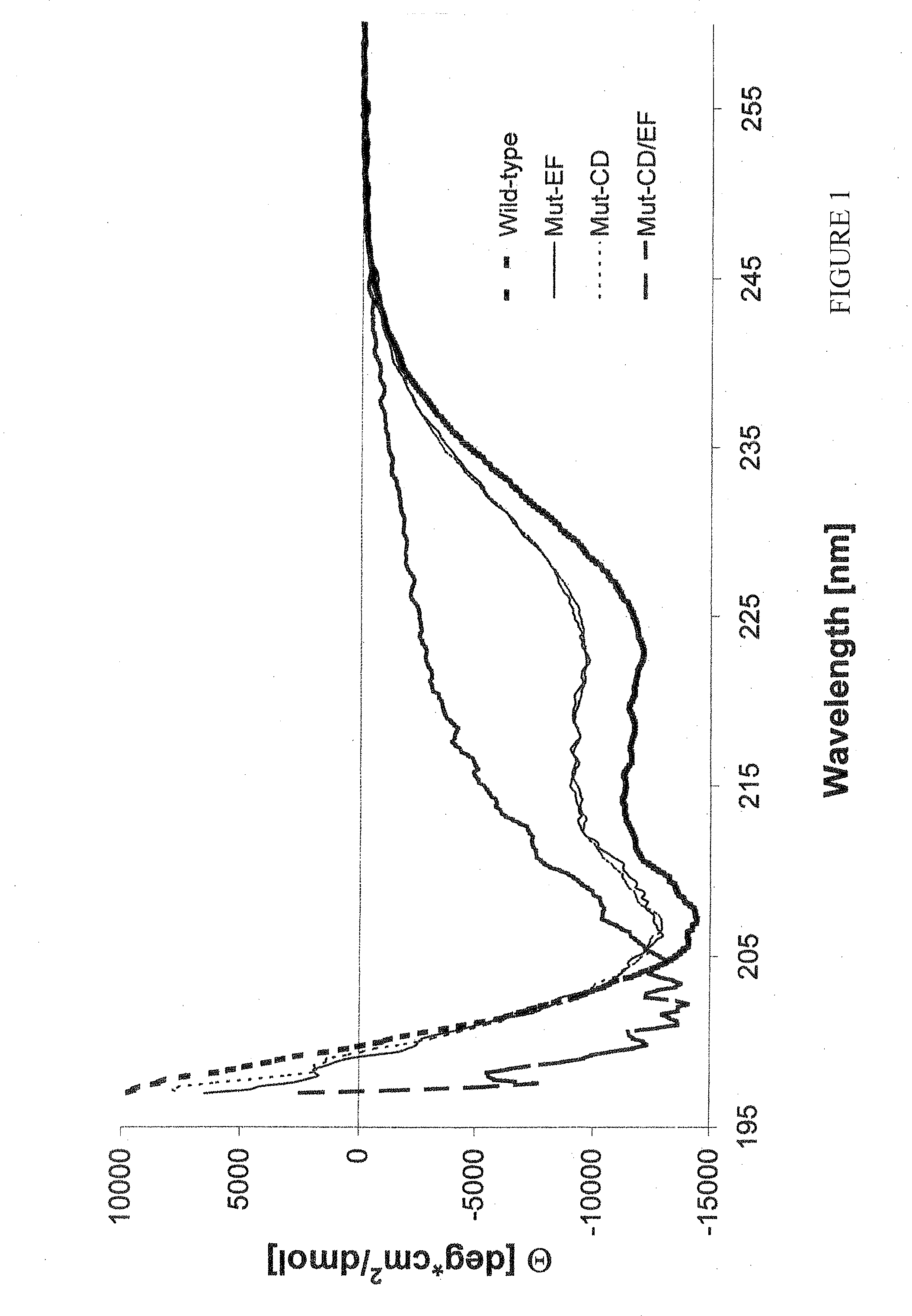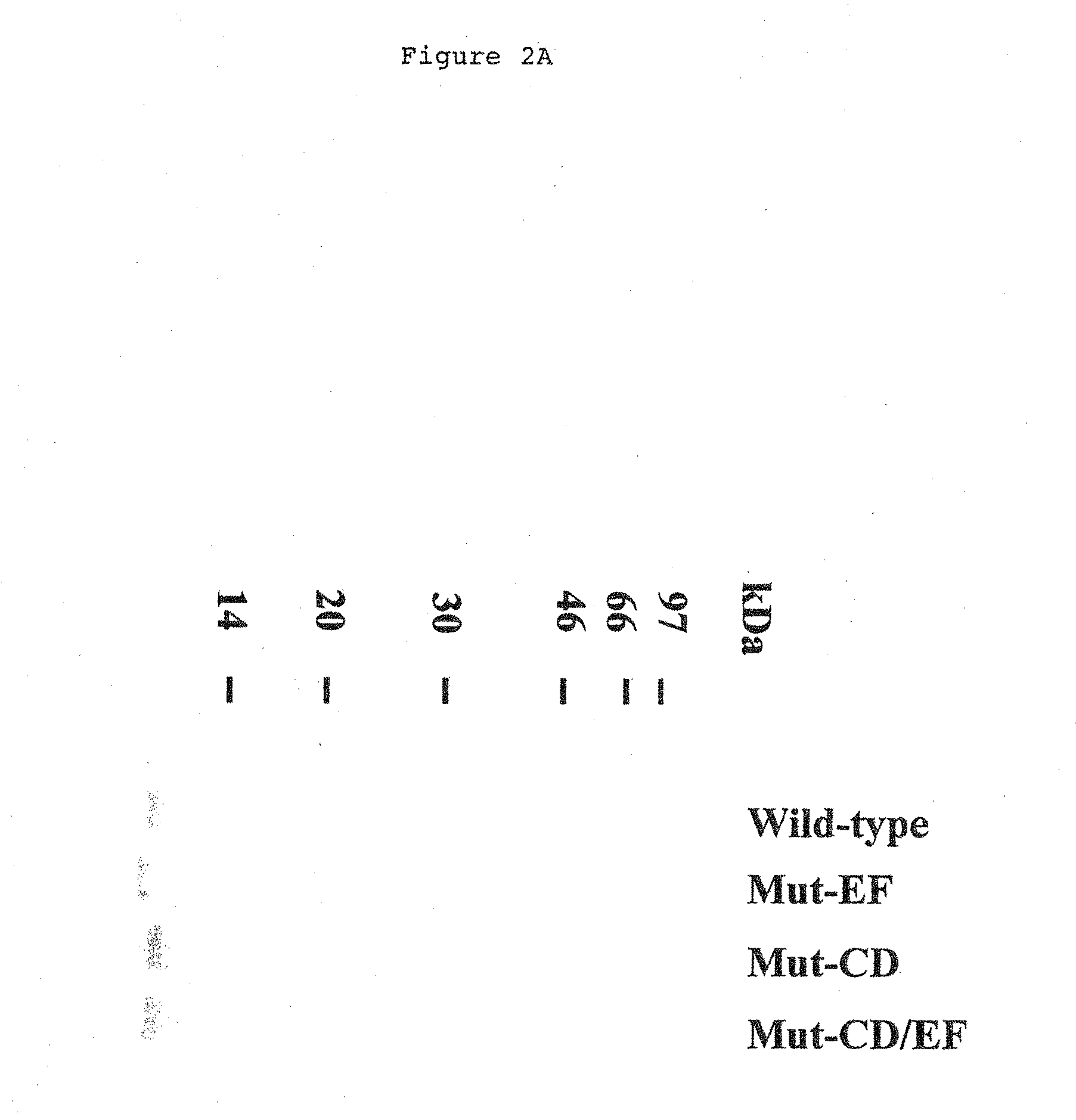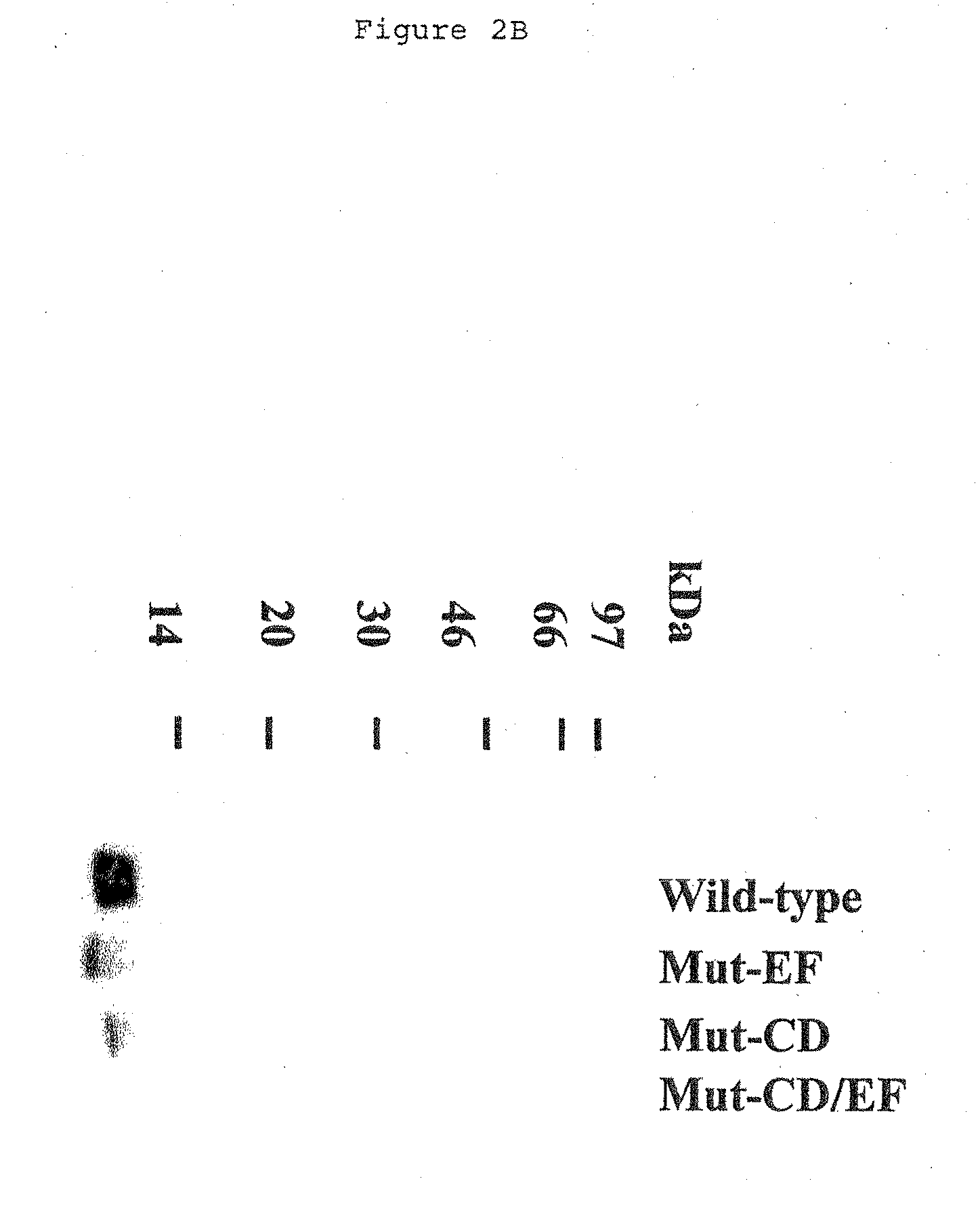Hypoallergenic Mutant Polypeptides Based on Fish Parvalbumin
a mutant polypeptide and parvalbumin technology, applied in the field of polypeptides, can solve the problems of high risk of severe anaphylactic reaction, too dangerous to apply in case of food allergies, and carry an enormous risk of inducing life-threatening anaphylactic side effects, so as to achieve less allergenic activity and less allergenic activity
- Summary
- Abstract
- Description
- Claims
- Application Information
AI Technical Summary
Benefits of technology
Problems solved by technology
Method used
Image
Examples
example 1
Quantitative IgE Inhibition Studies Show that Recombinant Carp Parvalbumin Contains the Majority of IgE Epitopes Present in Various Fish Species
[0088]To investigate and quantify the cross-reactive potential of recombinant carp parvalbumin, sera from 16 fish-allergic patients were preincubated with recombinant wild-type parvalbumin, expressed and purified as previously described (Swoboda et al., 2002), and then exposed to allergen extracts from cod, tuna, and salmon. Quantification of remaining IgE reactivity by CAP-FEIA measurements revealed a reduction of IgE binding to cod extract ranging between 62% and 96%, to tuna extract between 33% and 98% and to salmon extract between 41% and 95% (Table 2). These findings indicated that recombinant carp parvalbumin represents a highly cross-reactive allergen, which contains a large portion of IgE epitopes present in allergen extracts of various fish species.
[0089]Experimental Protocol:
[0090]Sera from 16 fish-allergic patients were preincubat...
example 2
Construction of Parvalbumin Mutants
[0091]In order to modify the carp parvalbumin cDNA Cyp c 1.01 (EMBL accession number AJ292211) in one or both of the functional calcium binding sites (CD- or EF domain), site-directed mutagenesis was carried out using the Chameleon Double-Stranded, Site-Directed Mutagenesis Kit (Stratagene, La Jolla, Calif.). The Ca2+-binding domains were mutated by replacing the first and third amino acid of the calcium binding loops (Asp) by non-polar Ala residues. Mutagenesis experiments were performed according to the manufacturer's instructions with two synthetic oligonucleotides (mutCD and mutEF) using Cyp c 1.01 DNA cloned into the expression vector pET-17b (Swoboda et al., 2002) as a template. Both oligonucleotides encompassed 45 by of the parvalbumin cDNA. Primer mutCD (5′-AAG GCC TTT GCT GTC ATT GCC CAA GCC AAG AGC GGC TTC ATT GAG-3′; SEQ ID NO:16) introduced changes in codons 52 (GAC→GCC) and 54 (GAC→GCC) and mutEF (5′-GCC TTC CTG AAA GCT GGA GCC TCT GCT...
example 3
Expression and Purification of Recombinant Carp Parvalbumin and of the Parvalbumin Mutants
[0092]Recombinant wild-type parvalbumin and the three parvalbumin mutants were expressed in Escherichia coli strain BL21(DE3). Isopropylthiogalactopyranoside (IPTG)-induced expression of Mut-CD and Mut-EF proteins resulted in a protein production similar to that observed for the wild-type protein (Swoboda et al., 2002), with 25-30% recombinant protein per total E. coli protein. However, bacteria expressing Mut-CD / EF grew more slowly and only approximately 2-3% of total bacterial protein represented Mut-CD / EF protein.
[0093]Recombinant proteins were purified from the soluble cytoplasmic fractions of bacterial extracts by anion exchange chromatography to about 95% homogeneity as judged by Coomassie brilliant blue staining of 15% sodium dodecyl sulfate polyacrylamid gels (SDS-PAGE; FIG. 2A) (Laemmli 1970).
[0094]Experimental Protocol:
[0095]Expression of recombinant proteins was induced in E. coli BL...
PUM
| Property | Measurement | Unit |
|---|---|---|
| Fraction | aaaaa | aaaaa |
| Fraction | aaaaa | aaaaa |
| Fraction | aaaaa | aaaaa |
Abstract
Description
Claims
Application Information
 Login to View More
Login to View More - R&D
- Intellectual Property
- Life Sciences
- Materials
- Tech Scout
- Unparalleled Data Quality
- Higher Quality Content
- 60% Fewer Hallucinations
Browse by: Latest US Patents, China's latest patents, Technical Efficacy Thesaurus, Application Domain, Technology Topic, Popular Technical Reports.
© 2025 PatSnap. All rights reserved.Legal|Privacy policy|Modern Slavery Act Transparency Statement|Sitemap|About US| Contact US: help@patsnap.com



